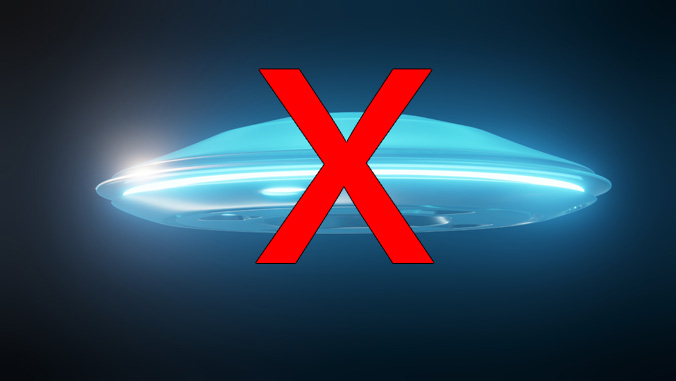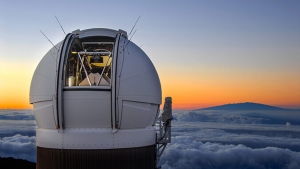
Mysteries have swirled around the origin of interstellar object ʻOumuamua since astronomers on Haleakalā first discovered it in 2017 with the University of Hawaiʻi Pan-STARRS1 (Panoramic Survey Telescope and Rapid Response System) telescope. The latest theory hails from a Harvard professor who speculates the object could be a listening device designed by an extraterrestrial intelligent civilization.
Harvard astrophysicist Avi Loeb claims ʻOumuamua could be dropping alien sensors on planets, including Earth. The timing of Loeb’s speculation arrived just days before the U.S. government released a highly anticipated unclassified intelligence report on June 25. In it, officials state 144 unidentified-flying-object sightings, more commonly known as UFOs, have been investigated since 2004.

- Related UH News story: Two UH astronomers part of international team that agrees on a natural origin for ʻOumuamua, July 2, 2019
Classifying ʻOumuamua as a potential UFO isn’t a theory supported by UH Institute for Astronomy (IfA) Astronomer Karen Meech, who led an international research team’s analysis of ʻOumuamua immediately after its discovery in 2017. Meech and fellow researchers initially investigated the object’s origin and found no evidence it is linked to alien life.
“It’s certainly intriguing to creatively speculate what the physical nature of something is when it is the first of its kind—this is part of exploration and discovery,” said Meech. “However, one has to follow scientific principles. Everything we have seen with ʻOumuamua is entirely consistent with it being a comet. We can’t prove it, because we had too little time and it was too faint to get all the data we would like, but that is a poor reason to declare it is alien technology.”

Meech and the international team of 14 experts, including IfA astronomer Robert Jedicke only had a brief window to closely analyze ʻOumuamua before it headed away from the Earth and Sun and rapidly faded from view. Astronomers zeroed in on the object 24-hours a day for about a week, although a little additional data was obtained (mostly from space telescopes) for 2 more months. Based on the evidence gathered, the team strongly suggests that ʻOumuamua has a purely natural origin and must have an extremely elongated shape, like a cigar unlike any known object in our solar system.
“This is all the data we will ever have,” Meech explained. “The data was consistent with it being a comet from another star system. It was observed to be accelerating out of the solar system at a rate that we often see for comets. Comet acceleration is caused by uneven outgassing that acts like rocket thrusters. We didn’t detect either gas or dust near ʻOumuamua and on this basis, Loeb has declared it is alien technology.”
Puzzling object inspires Hawaiian researchers
The UH-led discovery bears the Hawaiian name ʻOumuamua penned by UH Hilo Hawaiian language experts Kaʻiu Kimura and Larry Kimura. The name’s meaning reflects the way the object is like a scout or messenger sent from the distant past to reach out to us (ʻou means “reach out for” and mua, with the second mua placing emphasis, means “first, in advance of”).
Hawaiʻi is the first place in the world to weave traditional Indigenous practices into the process of officially naming astronomical discoveries, through an educational program, A Hua He Inoa, a collaborative effort by the ʻImiloa Astronomy Center at UH Hilo and Ka Haka ʻUla O Keʻelikōlani College of Hawaiian Language on the Hawaiʻi Island campus.
- Related UH News story: Hawaiian name given to dwarf planet orbiting Sun, November 16, 2020
In summer 2020, Hawaiian immersion kumu recruited by A Hua He Inoa named two celestial discoveries; dwarf planet Leleakūhonua and massive quasar Pōniuāʻena. The Hawaiian language program has named other Hawaiʻi-based discoveries Kamoʻoalewa and Kaʻepaokaʻāwela, and the black hole, Pōwehi.
The IfA research is an example of UH Mānoa’s goal of Excellence in Research: Advancing the Research and Creative Work Enterprise (PDF), one of four goals identified in the 2015–25 Strategic Plan (PDF), updated in December 2020.

